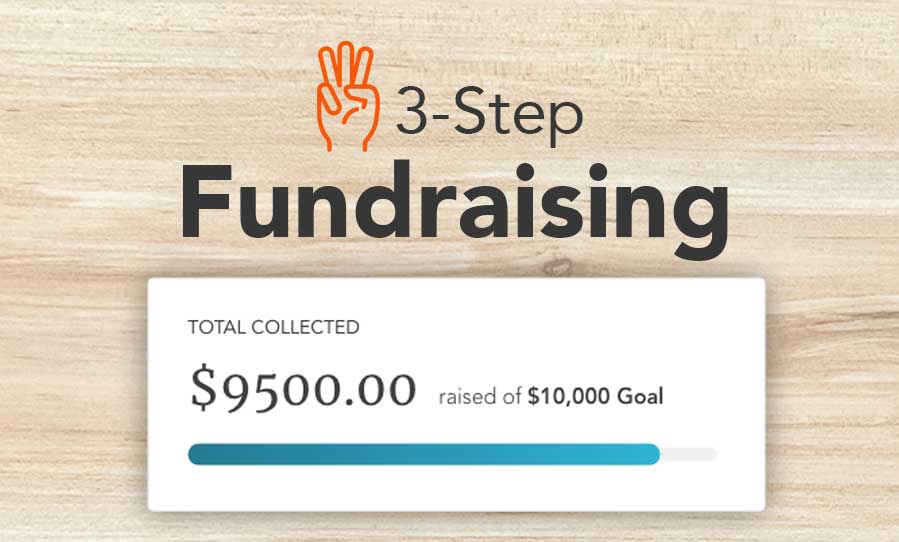Leading Nonprofit Fundraising Ideas: Cutting-edge Approaches to Elevate More Funds
Leading Nonprofit Fundraising Ideas: Cutting-edge Approaches to Elevate More Funds
Blog Article
The Role of Area Interaction in Nonprofit Fundraising: Structure Lasting Relationships for Lasting Assistance
Community interaction is increasingly identified as an essential element of successful not-for-profit fundraising. The techniques and techniques utilized to involve neighborhoods differ widely, elevating important concerns about performance and effect.
Comprehending Area Engagement
Area interaction is an important component of successful nonprofit fundraising efforts. It refers to the methods and activities that companies utilize to attach with their regional communities, promoting relationships that are mutually beneficial. Recognizing community interaction entails recognizing its diverse nature, that includes involvement, outreach, and cooperation. Nonprofits should determine vital stakeholders-- such as community members, local services, and various other companies-- to develop reliable engagement strategies.
Reliable neighborhood interaction is asserted on active listening and responsiveness to the needs and interests of the community. This procedure involves soliciting feedback, understanding area characteristics, and making certain that the company's objective lines up with local top priorities. Involving the neighborhood can take various forms, consisting of public conferences, volunteer chances, and partnership campaigns, each made to motivate involvement and financial investment in the company's goals.
Additionally, neighborhood interaction should be come close to as a continuous discussion as opposed to an one-time initiative. By fostering a comprehensive atmosphere where community voices are listened to and valued, nonprofits can build a solid structure for future fundraising endeavors. Ultimately, a deep understanding of area interaction empowers companies to develop authentic links that enhance their total effectiveness and sustainability.
Advantages of Solid Relationships
Strong partnerships formed with community interaction return various advantages for not-for-profit fundraising efforts. Primarily, these relationships foster depend on and reputation, vital components in encouraging benefactors to add. When potential advocates see a not-for-profit actively associated with their area, they are more probable to believe in its objective and influence.

In addition, these connections promote effective interaction. Nonprofits can leverage their connections to share tales of influence, updates, and needs, making certain that supporters stay enlightened and engaged. This open line of communication not just strengthens bonds yet also motivates referral promo, expanding the nonprofit's reach.
Finally, solid area ties can draw in brand-new companions and enrollers. Companies and individuals are extra inclined to align with organizations that show purposeful neighborhood involvement, offering extra sources and assistance that can substantially boost fundraising capabilities. Therefore, growing robust partnerships via area involvement is integral to a nonprofit's long-term fundraising success.
Methods for Efficient Interaction
How can nonprofits effectively involve their areas to improve fundraising efforts? Establishing targeted strategies is important for fostering purposeful connections. First, leveraging social media sites platforms enables companies to share their mission dynamically and interactively, reaching a broader audience. Routine updates, involving material, and calls-to-action can galvanize neighborhood rate of interest and engagement.
Second, holding area occasions, such as workshops, volunteer opportunities, or fundraising drives, promotes in person interaction, enabling nonprofits to display their influence and initiatives. These occasions not only increase funds yet additionally cultivate connections and enable area participants site link to engage directly with the cause.
Third, executing tailored interaction methods can boost interaction. Tailoring messages to particular benefactor sections based upon rate of interests and previous payments cultivates a feeling of belonging and financial investment in the company's goal.
Finally, developing collaborations with neighborhood organizations and area leaders can intensify outreach initiatives. Joint campaigns can boost presence and reliability, demonstrating a collective dedication to the area's health. By incorporating these methods, nonprofits can develop enduring relationships that enhance fundraising initiatives and drive lasting support.
Measuring Engagement Success
While involving the neighborhood is vital for successful nonprofit fundraising, gauging the performance of these interaction efforts is equally vital. Developing clear metrics enables companies to analyze how well they are getting in touch with their audience and attaining their fundraising objectives. Key efficiency signs (KPIs) such as donor retention prices, volunteer involvement levels, and involvement on social networks systems supply tangible data for analysis.

Regularly assessing these metrics makes it possible for organizations to pivot their strategies when needed, guaranteeing that community involvement stays straightened with their general mission. In addition, sharing these results with stakeholders look at this site fosters openness and builds depend on, encouraging more community participation. Ultimately, a durable measurement framework not just notifies future fundraising campaigns however additionally enhances the connection in between the nonprofit and its advocates, laying the foundation for sustainable success.
Study in Neighborhood Influence
Various study illustrate the profound influence that community involvement can have on not-for-profit fundraising success. One noteworthy instance is the "Something to chew on" effort, where a regional food financial institution partnered with institutions and organizations to host area dinners. These events not just increased funds but likewise promoted a sense of belonging amongst participants, considerably boosting benefactor retention rates.
Another engaging instance is the "Eco-friendly Spaces Task," which involved local citizens in the revitalization of city parks. This effort not only gathered financial support from regional businesses but additionally cultivated a volunteer base that added to continuous upkeep and programs. The sense of ownership and satisfaction amongst community members translated right into sustained payments.
In the world of arts, the "Art for All" project effectively involved neighborhood artists and customers to create collective art installments, resulting in increased presence and contributions for a neighborhood arts not-for-profit.
These instances highlight that when nonprofits focus on area participation, they can produce enduring relationships that boost fundraising initiatives, ensuring sustainable assistance and promoting a dynamic area culture. Such situations demonstrate that community engagement is not simply a strategy yet a crucial column of not-for-profit success.
Conclusion
Finally, community interaction is important to the success of nonprofit fundraising efforts. By promoting solid partnerships with local stakeholders, companies boost depend on and reputation, causing improved donor retention and loyalty. Implementing reliable engagement strategies and measuring their impact site web guarantees that nonprofits can adjust and flourish. Ultimately, a durable structure of area support not just magnifies fundraising potential but likewise grows a society of collaboration, important for accomplishing long-term business goals and maintaining meaningful influence.
Nonprofits need to determine vital stakeholders-- such as neighborhood participants, regional companies, and other companies-- to develop reliable interaction approaches.

In conclusion, neighborhood engagement is essential to the success of not-for-profit fundraising initiatives.
Report this page